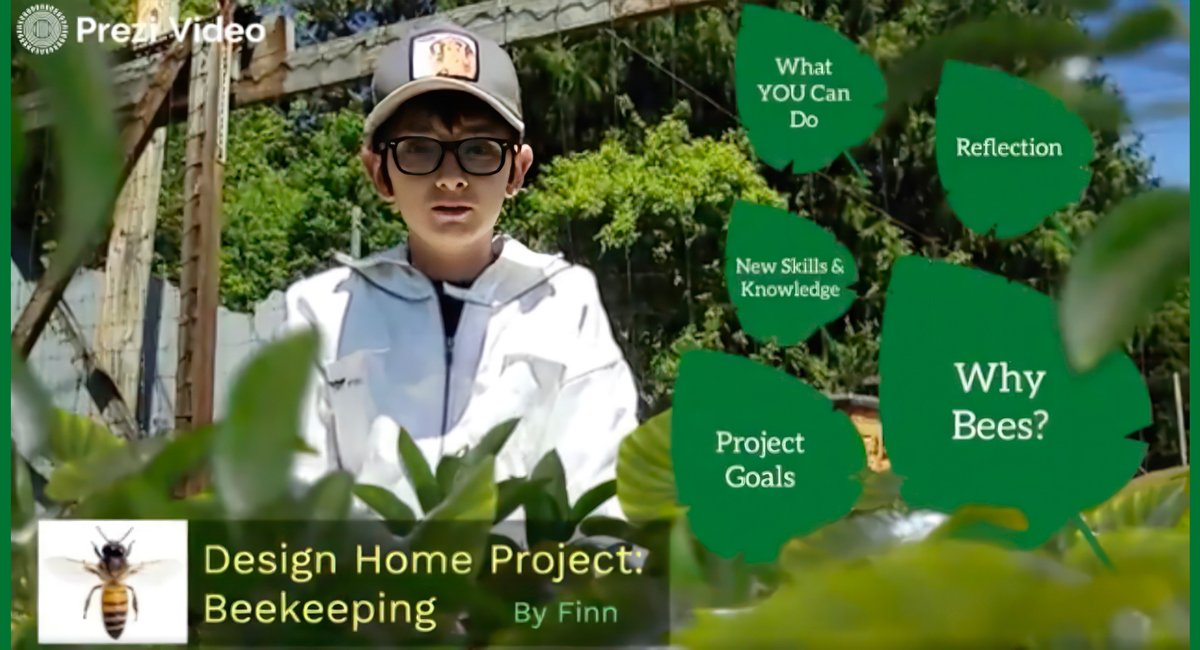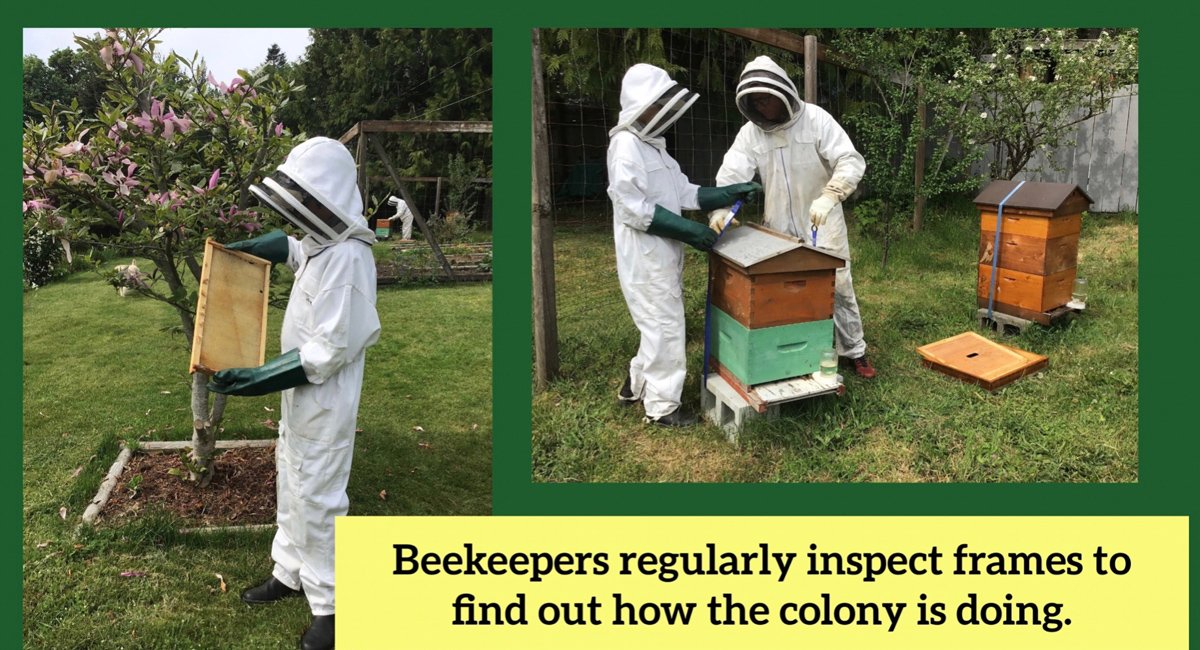Finnegan Brown
2023 Youth Climate Activism Essay Entry
Finn with his teacher Linda Bayes Brookes at Westshore School.
A Quiet Observer; Advancing Sustainable Thinking Through Art and Activism
When was the last time you stopped to watch a bee at work? Lately, I’ve been painting a lot of bumblebees. Their round, fuzzy bodies. Legs covered in bright yellow pollen. Shiny black eyes. When I pause to observe bees in my garden, I see a universe of activity.
I feel incredibly grateful to live in the beautiful traditional territories of the Coast Salish, specifically T’Sou-ke Nation. When I first moved to Vancouver Island, I eagerly joined the outdoor Nature Sketch program through the Bateman Foundation. The concept of connecting to nature through art instantly made sense to me. My first teacher was Leanne Cadden. I wish everyone had the opportunity to go outside and do nature sketches with Leanne. It sounds simple, but how often do most people go outside, observe nature, and draw what they see? It is a small thing, but I am positive it would have an enormous ripple effect on the decisions people make and the way they choose to live. People will look after what they care about.
Over the last few years, I have seen so much construction and development where I live. I worry we are not thinking enough about sustainability. I realize people need places to live, and I believe there are creative solutions that do not involve mowing down all the wild spaces around us. To explore sustainable architecture, I took an art and design course for teens at Emily Carr University. I researched material ecology and began experimenting with bio-inspired urban design. I now create drawings and build models to share eco-friendly housing and community development ideas with my teachers and classmates. I want to continue learning and engaging others, including the council members where I live, in conversations about green urban planning.
Climate activism takes shape in many forms. For some it is through marches and hashtags, but for me it has always been through artistic expression. I feel passionate about protecting nature. It is why I use artistic activism to promote climate action and to advocate for the wild world. I believe climate action needs to be included in every conversation, so I share the art I create in my community, at my school, and with my family and friends. Through my art, I raise awareness, and I aim to spark awe of the natural world. I hope to ignite something in people that gets them thinking about the state of our home, and to take action to ensure a bright future for our planet.
Here are a few of my environmental art projects:
Home: A Salmon Story
A short stop-motion film to raise appreciation for salmon habitats in Goldstream Provincial Park


Bees!
A short film about backyard beekeeping with my dad, to promote biodiversity and the protection of pollinating insects.


AIR
A zine created with my friends to raise awareness about the summer of 2023’s projected air quality index.
Nature X Humanity
A series of concept designs for sustainable collaboration, and bio-inspired urban living.


When Nature Calls
Plans and a model for an eco-friendly public washroom and dog washing station.


Heron sketch and Haiku.
Majestic heron
On tip-toes he stalks his prey
Gulp! Down the gullet
The West Coast Hermit Fox
An imagined Salish Sea coastal creature
Magnolia tree sketch & Poem
After a sleepy winter’s rest, pale petals timidly peek from their buds.
Tempted by chirping birdsong and the warm breeze, the magnolia tree is restless for spring.
Suddenly,–in a brilliant burst of pink and perfume!–the flowers let out a satisfied yawn, stretching open to meet the smiling sun.
I never used to consider myself a politically active person. However, my recent experience as a member of the 29th Islands Youth Parliament (IYP) completely changed my perspective. Last month, I wrote a private member’s resolution about something I care deeply about: the drastic decline of global bee populations. My idea was that the BC government could set an example and draw attention to the vital role bees play in promoting biodiversity, food security, and the resilience of cities against climate change. I presented my motion in support of the introduction of rooftop beehives on the Victoria Parliament Buildings —and it was carried! Through IYP, I learned I can advocate for the natural world in many ways.
I am motivated to continue broadening my impact towards improving the outlook of our planet by creating art (and architecture!) that inspires sustainable thinking, and by learning how the parliamentary process can foster climate action. If I were to receive the 2023 Youth Climate Activism Award, I would use part of the funds to register for the British Columbia Youth Parliament (BCYP), and part to take more teen architectural design courses. My ambition is to present two motions at the 95th Session of BCYP: one in support of funding for arts-based environmental education (like Nature Sketch) in BC schools, and one to promote eco-friendly, bio-inspired urban design projects throughout our province.
I believe artists impact society. Art has the power to move people to protect our home. When people see the beauty of nature, they want to preserve it. Before I draw or paint, I always pause and quietly observe the wild world around me. When people look at my art, I hope they feel moved to do the same.
As part of the submissions application we asked participants to answer these 3 questions in addition to their essay or video.
What future goals do you have around your environmental and climate work, and do you have any future projects in mind?
One goal around my environmental work is to create a concept design for a bio-inspired, zero-waste school. I live in a rapidly growing area, and the school district currently owns several properties for future school locations. A project I have in mind, is to collaborate with my friends to generate ideas, plans, and build a scale model for a green school. We could then present our concept design to the school trustees and superintendents. Obviously, we are not engineers or licensed architects (yet!), but I believe our plans would send a strong, and inspiring message to school decision-makers regarding the kind of spaces we want to learn in, and what students are passionate about.
If you could share with us one message of hope for our planet, what would it be?
My message of hope for our planet would be "An Invitation", by Percy Bysshe Shelley. For me, this poem is an energizing reminder of why we champion climate activism. Specifically, the lines;
Away, away, from men and towns,
To the wild wood and the downs—
To the silent wilderness
Where the soul need not repress
Its music lest it should not find
An echo in another's mind,
While the touch of Nature's art
Harmonizes heart to heart.
Who or what inspires you to work on climate change?
This is a very long list, but to name just a few; Neri Oxman, for her brilliant, innovative material ecology; Tom Thomson, for making me want to explore, paint, and protect wild spaces; Greta Thunberg, for being a fierce advocate for the planet; bees!, for sustaining life on earth; everything I see hiking on East Sooke coastal trails; inclusive communities of people volunteering their energy and ideas, and working together to fight climate crisis; other young people who are engaged and care about the world; trees!; animals!; and so much more . . .
The Art of Youth Climate Activism
Patricia Lane of National Observer interviews Finn about his projects and activism.
Finn is also a member of the Youth Climate Cabinet






